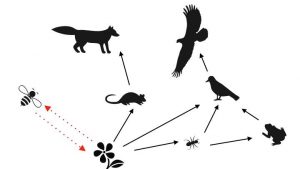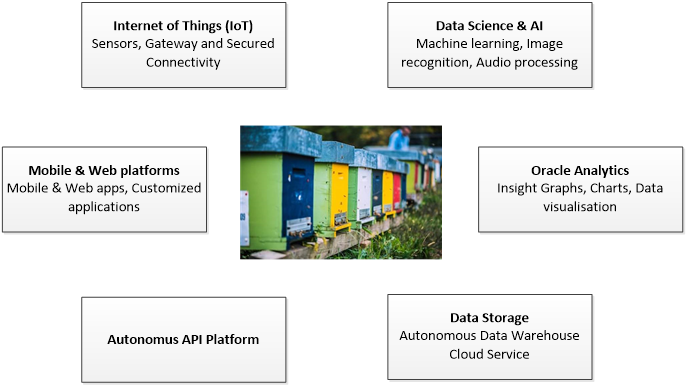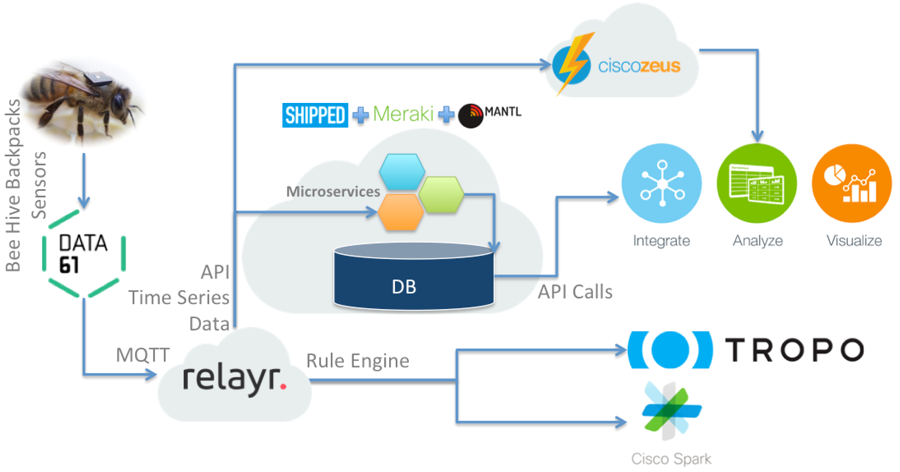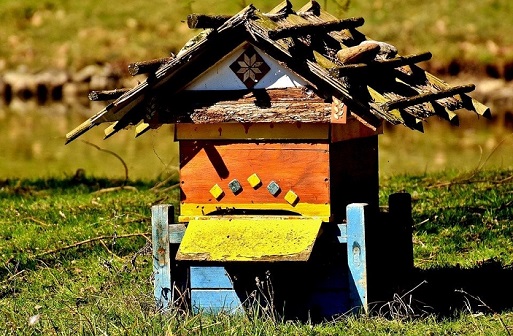Honey bees have fascinated me since I was a child. I remember helping my grandfather collect the honey and other products, from the bee hives that he managed, and eating there, on the spot, the fresh products. What a delight!
A bit about bees
There are over 20.000 species of bees worldwide and the honey bees that we all know, represent only one of them. Bees and other pollinators play a critical role in the ecosystem and they also help us put food on the table.

The decline of the bee population
The industrial agriculture, the loss of habitat, the loss of biodiversity, the pesticides, climate change, they all have an impact on the bees and other pollinators population.
Scientist, beekeepers, researchers, governments and others, they all need to have a better understanding of the relationship between bees and the environment. And since the wild bees are difficult or even impossible to monitor, the focus goes to the honey bees because, in the end, a bee is a bee and an environment that is good for one type is most likely good for another as well.
New approaches to understand the relationship between bees and the environment
Oracle and The World Bee Project
In 2018 a collaboration emerged between a team of bee passionate people, The World Bee Project and Oracle to help shed some light into the bee’s behavior.
That was the beginning of The Global Hive Network Project, the world’s first AI smart hives network.
They equipped hives with IoT sensors and remotely collect data from inside each hive, like acoustic data (from the movement of bee’s wings and feet), temperature, humidity, the hive’s weight, honey yield, etc and fed it into Oracle’s Cloud together with the environment conditions.

CSIRO (Australian Commonwealth Scientific and Industrial Research Organisation) & Co
Another great initiative is the Global Initiative for Honey Bee Health of CSIRO & Co, that studies the bee’s behavior by tracking the movements of the bees, the conditions inside and the environment.
They equipped around 10.000 bees with RFID (Radio Frequency Identification) chips, the size of a rice grain and the hives with Intel Edison boards. The RFID chips are scanned by readers inside the hives and the data is saved into the cloud.

If you have time, I would recommend to read this article Connected Bees: IoT-Enabled Bee Health
Processing the data collected
Once in the Cloud, the data is then processed with the help of Oracle Cloud / Cisco Zeus technology. They use analytical tools, AI and data visualization and the information resulted can be then shared with scientist and researchers to help them detect and predict behaviors, with beekeepers, governments and others who want to have a better understanding of the honey bees and their connection to the environment.
It gives new insights into the life of bees and how are they affected by the human behavior.
The importance of the information obtained in this manner could be of a great hep to agriculture also, as it gives us access to new insights into the links between environment, hive conditions, honey bee health and the pollination of agricultural crops by honey bees.
And let’s admit, a world without honey bees will definitely be less sweet ?
Sources:
http://worldbeeproject.org/world-bee-project-hive-network
https://www.oracle.com/corporate/blog/oracle-cloud-ai-world-bee-111319.html
https://www.iothub.com.au/news/csiro-and-intel-call-on-edison-to-save-bees-408808
https://www.csiro.au/en/News/News-releases/2015/Honey-Bee-Health
https://www.intel.co.uk/content/www/uk/en/it-management/cloud-analytic-hub/save-bees-with-big-data.html
Sources for the pictures:
https://pixabay.com/photos/beehive-bees-wood-colorful-2183771/
https://www.beelab.umn.edu/bees/pollination
https://dzone.com/articles/connected-bees-iot-enabled-bee-health
